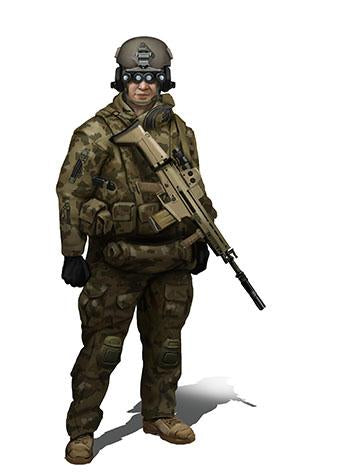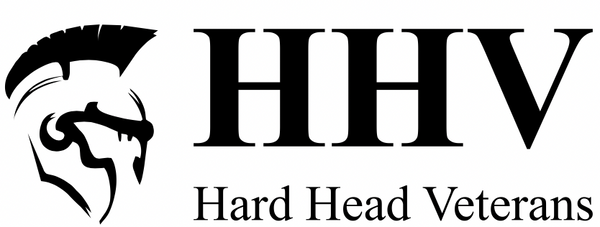EVOLUTION OF THE COMBAT HELMET [VISUAL GUIDE]
Helmets are as old as war itself, and were some of the very first forms of protective equipment for those engaged in warfare. It’s know that even the most ancient empires that we study such as the Akkadians and Sumerians around 23rd Century BC used helmets. As warfare and weapons evolved, so did the helmets used to protect against them. Helmets made from leather, evolved into brass, bronze, steel and then to the complex modern fibers of today. We will be looking at each major period and discussing the evolution, protection offered, and comparisons to those helmets before and after.
MYCENAEN GREEK BOAR TUSK HELMETS
Fans of Homer’s Iliad will recognize this text “ Meriones gave Odysseus a bow, a quiver and a sword, and put a cleverly made leather helmet on his head. On the inside there was a strong lining on interwoven straps, onto which a felt cap had been sewn in. The outside was cleverly adorned all around with rows of white tusks from a shiny-toothed boar, the tusks running in alternate directions in each row.” We know that these ivory boar’s tusk helmets were used in the Mycenaean world from as early as 17th century BC to 10th century BC. With several discoveries of actual helmets carbon dating back to 14th century BC.
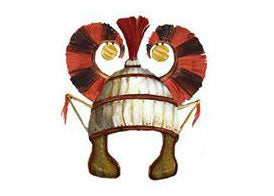
Protection
The combination of leather and tusks make for a helmet that provides limited blunt and edge resistance. It may have protected well against slings, and glancing blade edge blows. It is doubtful however that it would have protected well against arrows and direct edged blows.
Weight
Most actual helmets found, weigh between 1.2 lbs and 2.5 lbs depending on size and construction. Providing a very lightweight option in comparison to future helmets, even in today's world of light-weight advanced fiber technology.
Comfort
We have to assume that it was rather comfortable with the leather liner, as we doubt the National Archaeological Museum in Athens where they have one on display would let us try it on!
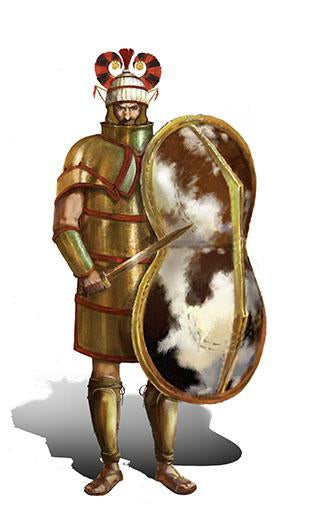
CORINTHIAN HELMET
When we think of ancient Greece, this may be the helmet that comes to mind and for good reason. The Corinthian helmet, named after the city state of Corinth is considered to be one of the most popular helmets during the Archaic and early classical period. This was the helmet of choice for Greek hoplites during some of the most famous ancient battle of Marathon, Themopylae and Plataea. Made of bronze it had a large curved projection that protected the nap of the neck. If you are a Star Wars fan, think Boba Fett and you will see the resemblance. This style of helmet was used from 6th century BC to 1st century BC.
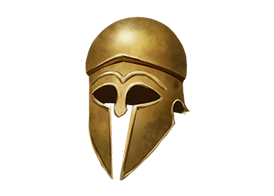
Protection
Most Corinthian helmets were crafted from a single sheet of bronze that created a “seamless” helmet. This should give you an appreciation for metal workers from this time period! While not capable of stopping a direct arrow shot, they would commonly deflect arrows. The bronze also provides additional protection from edged weapons of this period.
Weight
Corinthian helmets that have been preserved can weigh between 2 lbs and 4.4 lbs. This is very similar to modern military helmets in weights.
Comfort
They tend to be custom made and lined with leather for comfort. It was common for these helmets to be tipped upwards while not in combat to increase conformability. While bronze has a lower conductivity than other metals it still conducts heat and cold. We can assume that the helmet would heat and cool with the environment.
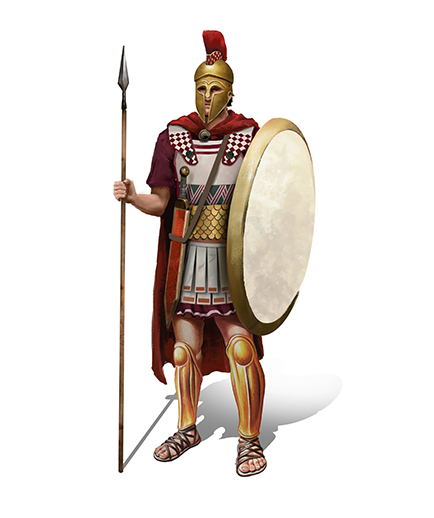
GALEA HELMETS
This famous legionnaire helmet consists of several different versions and designs ranging from location and time period. All which are centric to the Roman Empire. They date from 1st century BC to 4th century AD. They featured a sloped neck guard, projecting ear guards, brass trim, and even decorative bosses. The helmet would evolve to include iron bars riveted crosswise across the helmet to increase protection, especially against the falx (curved type blade).
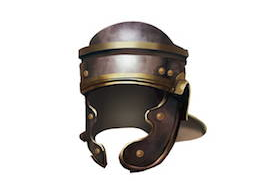
Protection
These helmets provided protection from edged and missile type strikes, but like the rest only to an extent.
Weight
Due to the numerous changes and types of Galea helmets available weights have been reported from 1.3 lbs all he way up to 5 lbs
Comfort
The padding used in these helmets is thought to be thick wool or some type of linen, though there is little evidence to support this. Many think some type of simple hat was used underneath.
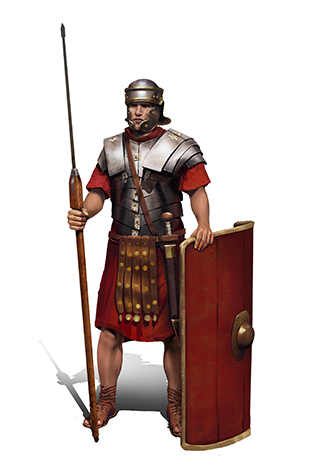
NASAL HELMET
The name gives it away with the characterized use of a nose-guard down the middle of the users face. It was used throughout Europe in the 9th century AD up to the 12th century AD. They were some of the first helmets to be predominately all iron, and would eventually be made from single sheets of iron instead of segmented construction. They were used over the top of a mail coif that provided additional protection for the neck, throat and head.
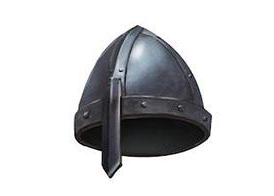
Protection
Offer increased protection due to the double layering of mail coif and iron.
Weight
6 lbs up to 4 lbs depending on construction and thickness of iron. When used in combination with chainmail, total weight may have been close to 6 or 7 lbs.
Comfort
There is evidence of different types of liners made from leather and wool that would allow the used to achieve the desired fit. These helmets did provide increased field of vision compared to many other helmets.
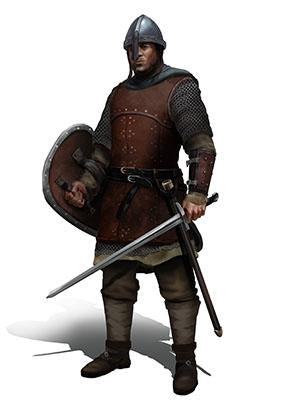
THE GREAT HELM
Was an evolution from the nasal helmet used from 12th century AD to around the 15th century AD. It was a barreled style and used by most knights in the armies of Europe. This enclosed helmet offered superior protection, but at the cost of visibility and comfort. By the 13th century, most great helms were worn with a mail coif in conjunction with an iron skullcap to provide 3 layers of protection.
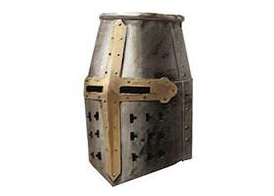
Protection
Was greatly increased due having full face protection. Was also increased by the three layers of protection of the mail coif, skullcap, and helm. Most were very capable of stopping direct blows from edged weapons and missiles.
Weight
Helms themselves could weigh between 3.3 lbs and 6 lbs. Adding the mail coif, iron skullcap and lining puts many of these helmets above 10lbs.
Comfort
Due to enclosing the helmet, ventilation was an issue. Even with later designs with vent holes designed into them. They were worn with cloth padding that restricted ventilation further. Finally the extra weight and limiting of vision caused men to remove the helm after an initial clash to gain better freedom of movement in combat.
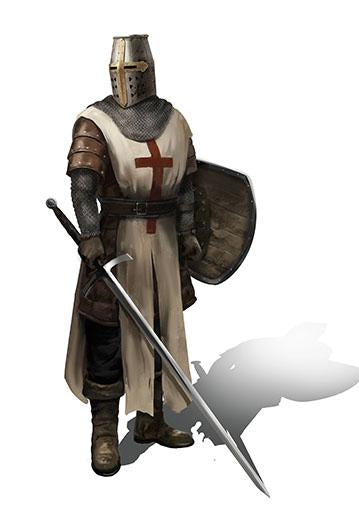
ARMET HELMET & CLOSE HELMS
These helmets were used in the Late Medieval and Renaissance Eras. They were distinct in their ability to enclose the entire face and head. They were also compact and light enough to move with the wearer in this way. The Armet was used mostly during the 15h and 16th centuries when European plate armor had been perfected by blacksmiths.
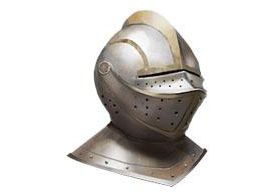
Protection
Metal tempering and design greatly improved during this era. With variations in designs that would limit gaps in armor lessening the common weak points of armor before. Some Close Helms were even modular for heavy or light field use, tournament combat, and even costume.
Weight
4.3 lbs up to 7.7 lbs depending on design and thickness of materials.
Comfort
Like the great helms ventilation was an issue. Though the face piece could be lifted to alleviate this problem. Most would have been worn with some type of underlining or cloth hat.
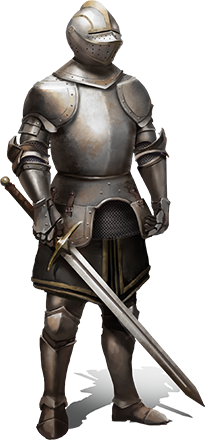
BRODIE HELMET (MARK I OR M1917)
Patented by John Leopold Brodie in 1915 the Tommy helmet or doughboy helmet would be fielded by the allied armies of WWI. With more than 7.5 million being produced by the end of the war. The design was made of Hadifield steel with a slight brim. The design allowed for the thick steel to be formed in a single press while maintaining a uniform thickness.
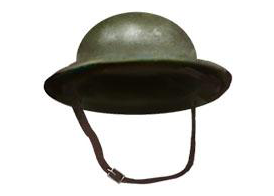
Protection
The hardened steel used in these helmets were made with 12% manganese which was capable of stopping a .45 caliber pistol round at 600 fps fired at 10 feet. While it provided limited protection to the lower head and neck, it proved to be valuable protection against indirect fire.
Weight
The weight of the helmet was 1.3 lbs.
Comfort
Due to the light weight and numerous upgrades to the liner and strap system of these helmets they were relatively comfortable especially for the protection they offered.
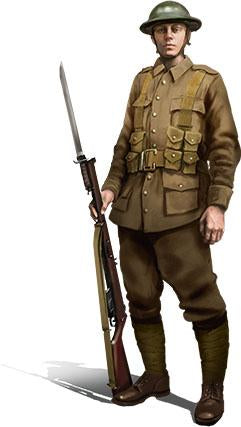
M1 HELMET
Designed by Major Harold G. Sydenham, over 22 million helmets would be manufactured by the end of World War II and another 1 million plus for the war in Vietnam. It consisted of an outer steel shell with a hardhat type liner with suspension system. The helmet shape provided additional coverage over the forehead, side, and neck. Each helmet was made from a single piece of pressed hanfield manganese steel.
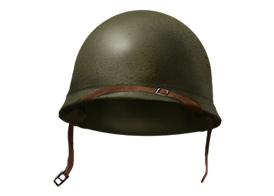
Protection
Very similar to the Brodie steel helmet in terms of actual ballistic capability with the helmet being rated to a .45 caliber pistol round at 600 fps fired at 10 feet along with fragmentation protection.
Weight
The weight of the helmet was 2.85 lbs with liner and chinstrap.
Comfort
Most solders found the helmet comfortable enough to wear with the built in liner. The liner itself was adjustable and was one of the first ever suspension type liners used in helmets.
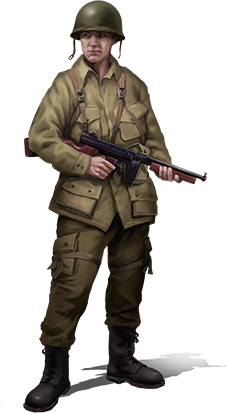
PASGT HELMET
Was designed as a replacement for the M1 helmet and was the first mass-produced helmets to use ballistic fibers instead of an alloy. It was also the first mass-produced helmet to designed to accommodate various accessories such as night vision goggles or a riot control visor. It is still used today by various militaries, police and civilians.
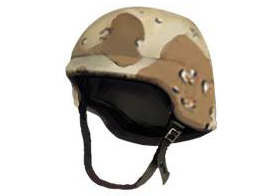
Protection
The combination of leather and tusks make for a helmet that provides limited blunt and edge resistance. It may have protected well against slings, and glancing blade edge blows. It is doubtful however that it would have protected well against arrows and direct edged blows.
Rated to the NIJ IIIA protection that is capable of stopping a .44 magnum pistol round at 10 feet. Along with fragmentation protection.
Weight
3.1 lbs to 4.2 lbs
Comfort
The helmet itself can be designed with a built in suspension system or adjustable pad system. The more modern PASGT helmets utilize the adjustable pad system to achieve the best-desired fit for the end user. Pads very in user experience, but most OEM pads are considered uncomfortable at best. Companies such as Hard Head Veterans and Team Wendy are making aftermarket Comfort Plus Pads to increase conformability. Check out the guide Best Tactical Helmet Pads
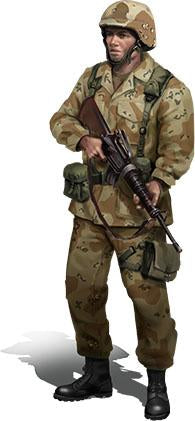
MICH/ACH HELMET
The MICH helmet was originally designed for special operations troops and used almost exclusively by SOCOM until the design and function caught on with more conventional units. It features a closer fitting shell, with ear bump out to accommodate communications devices. Though not always adequately due to the close fit. The MICH is commonly fitted with a night vision shroud, and even side accessory rails. Most modern day militaries and police use this style of helmet.
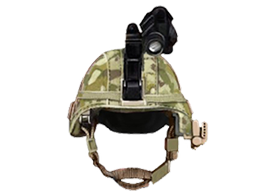
Protection
Rated to the NIJ IIIA protection that is capable of stopping a .44 magnum pistol round at 10 feet. Along with fragmentation protection.
Weight
3.0 lbs to 3.6 lbs
Comfort
The MICH and ACH helmets are much more comfortable than a great helm or PASGT helmet, but they do have a few drawbacks. Many are manufactured, just as the PASGT is, with sub-par pads. The other issue is the prevalence of communications headsets used in conjunction with the helmet. Even with the ear bump outs most headsets will be pressed into the side of the head creating discomfort in a short period of time.
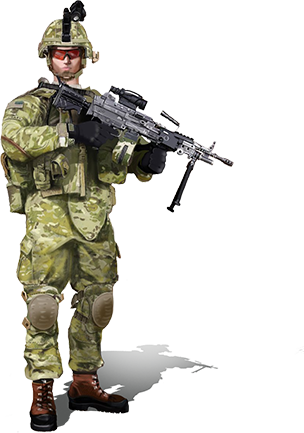
ATE (ABOVE THE EAR) HIGH CUT HELMET
Are the results of the natural evolution/need to support more helmet borne accessories and communication devices. The main design change is the cut out along the side of the ear where communications headsets would sit without interference. Most also feature side rails and NVG shrouds.
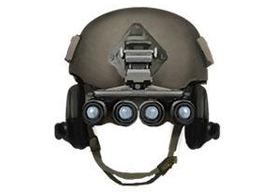
Protection
Rated to the NIJ IIIA protection that is capable of stopping a .44 magnum pistol round at 10 feet. Along with fragmentation protection. You do lose side coverage where the cut outs are. Furthermore rifle rated helmets and up-armor products are becoming available like our Up-Armor that defeats both 5.56 and 7.62 rifle rounds.
Weight
2.2 lbs to 3.0 lbs.
Comfort
These helmets are extremely comfortable to wear due to advancements in liner materials, suspension systems, and reduction in weights.
